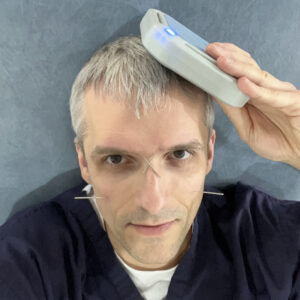
Sciatica Relief: Top Pain Management Therapies to Try
Uncover Effective Non-Surgical Techniques to Relieve Chronic Sciatica Discomfort
Living with chronic sciatica can dramatically alter your everyday life, causing significant pain and discomfort that disrupts routine activities. This condition arises when the sciatic nerve, which extends from the lower back down through the legs, faces compression or irritation. Typical symptoms include persistent pain, numbness, and weakness in the affected leg, making even simple tasks feel overwhelming. Gaining a comprehensive understanding of the complexities surrounding chronic sciatica is vital for identifying effective pain relief strategies and management techniques tailored to individual circumstances. By confronting these challenges, individuals can foster a more active and fulfilling lifestyle, liberated from the grip of debilitating pain.
Identifying the underlying causes of chronic sciatica is crucial for developing personalized treatment plans. Numerous factors can lead to this condition, including herniated discs, spinal stenosis, and degenerative disc disease. These medical issues may exert pressure on the sciatic nerve, resulting in the distressing symptoms that many individuals suffer from. By accurately diagnosing these underlying conditions, patients can formulate an effective management strategy that addresses the root issues, ultimately enhancing their quality of life and alleviating discomfort.
The intensity and duration of pain associated with chronic sciatica can vary significantly among individuals. Some may experience a persistent dull ache, while others may endure sharp, radiating pain that disrupts daily activities. Moreover, the ongoing discomfort linked to chronic sciatica can trigger emotional distress, negatively impacting one’s mood and overall well-being, thereby perpetuating a cycle of pain and psychological challenges. Recognizing these intricate dynamics is essential for implementing effective relief strategies.
Essential Techniques for Managing Chronic Sciatica Symptoms Effectively
- Chronic sciatica typically presents as a lasting condition characterized by pain, tingling sensations, and numbness in the lower back and legs.
- Engaging in physical therapy can significantly improve flexibility, strength, and mobility for those affected by chronic sciatica.
- Medications, such as nonsteroidal anti-inflammatory drugs (NSAIDs) and muscle relaxants, can effectively alleviate symptoms associated with chronic sciatica.
- Complementary therapies like acupuncture, chiropractic adjustments, and yoga can provide additional relief from chronic sciatica symptoms.
- If conservative treatments do not yield satisfactory results, surgical options such as discectomy or laminectomy may become viable for chronic sciatica patients.
 Harnessing the Power of Physical Therapy to Combat Chronic Sciatica Pain
Harnessing the Power of Physical Therapy to Combat Chronic Sciatica Pain
Enhancing Chronic Sciatica Management Through Tailored Physical Therapy
Physical therapy serves as a fundamental element in the successful management of chronic sciatica. By participating in a personalized physical therapy program, individuals can specifically strengthen the muscles supporting their spine, thereby boosting overall flexibility and strength. A skilled physical therapist will conduct a thorough assessment of the patient’s condition and design a tailored exercise regimen aimed at alleviating pressure on the sciatic nerve. This customized approach not only accelerates recovery but also enhances overall functionality, empowering individuals to regain control over their movements and daily activities.
Key Elements of an Effective Physical Therapy Regimen for Sciatica Relief
An impactful physical therapy program for sciatica typically includes targeted stretching and strengthening exercises focusing on the core, hips, and lower back. These exercises are specifically customized to address the unique needs of each patient, helping to relieve pressure on the sciatic nerve. Additionally, physical therapy may incorporate heat or cold treatments to reduce inflammation, further enhancing the effectiveness of the treatment and expediting recovery. By integrating these components, individuals can experience a more holistic and effective approach to managing their symptoms associated with chronic sciatica.
Innovative Physical Therapy Techniques for Accelerated Sciatica Recovery
Physical therapists can utilize cutting-edge techniques such as ultrasound therapy and electrical stimulation to promote healing in affected areas. These advanced modalities can significantly diminish inflammation, lessen pain, and encourage tissue repair. By incorporating these modern techniques into a comprehensive physical therapy strategy, individuals are likely to see improved outcomes and a more efficient recovery process, ultimately leading to enhanced mobility and overall quality of life.
Long-Term Advantages of Committing to a Physical Therapy Routine for Sciatica Relief
Adhering to a consistent physical therapy routine empowers individuals to manage chronic sciatica effectively while minimizing the risk of future flare-ups by building physical resilience. Regular participation in physical therapy can lead to improved overall body function, reduced pain levels, and a remarkable enhancement in long-term health and well-being, fostering a more vibrant and fulfilling lifestyle. By investing in their health, individuals can reclaim their lives from the constraints of chronic pain.
Evaluating Medications for Effective Management of Chronic Sciatica Pain
While non-invasive treatments often serve as the first line of defense, medications can play a crucial role in alleviating chronic sciatica symptoms. Over-the-counter pain relievers, such as ibuprofen or acetaminophen, may provide temporary relief to those enduring this condition. For individuals facing more severe pain, healthcare providers may prescribe stronger medications, including muscle relaxants or anti-inflammatory drugs, to better manage symptoms. This medication approach can significantly enhance the quality of life for those affected by chronic sciatica.
These medications work by reducing inflammation around the sciatic nerve, which consequently alleviates pain. In certain situations, healthcare providers may recommend corticosteroid injections for immediate relief. These targeted injections deliver anti-inflammatory medications directly into the area surrounding the sciatic nerve, effectively reducing swelling and providing substantial pain relief, allowing individuals to return to their normal activities without discomfort.
Although medications can be a powerful ally in symptom management, it is essential to use them judiciously and under the guidance of a healthcare professional to minimize potential side effects or the risk of dependency. A well-structured medication plan should complement a comprehensive approach to managing chronic sciatica, ensuring optimal results.
 Exploring Holistic Alternative Therapies for Chronic Sciatica Relief
Exploring Holistic Alternative Therapies for Chronic Sciatica Relief
Investigating alternative therapies for chronic sciatica can unveil additional avenues for relief that do not involve invasive procedures. A widely recognized option is acupuncture, which involves the insertion of fine needles at specific points on the body to promote healing and alleviate pain. Many individuals report considerable improvements in their symptoms following acupuncture sessions, as this method effectively reduces nerve pain while promoting relaxation and emotional well-being.
Another promising alternative therapy is electrotherapy, which uses electrical impulses to stimulate nerves and muscles. This technique can enhance blood circulation and reduce inflammation in the affected area, ultimately leading to pain relief and improved mobility. Light therapy has also gained recognition for its pain-relieving properties, utilizing specific wavelengths of light that penetrate the skin to promote healing and comfort.
Cupping therapy is another intriguing alternative, involving the placement of cups on the skin to create suction. This technique is believed to enhance circulation and alleviate muscle tension, potentially providing significant relief from sciatica symptoms. Additionally, massage therapy can offer substantial relief by targeting tight muscles and enhancing blood flow in the lower back and legs, which is essential for managing pain and improving overall mobility.
Incorporating stretching into your daily routine can yield tremendous benefits for sciatica relief. Engaging in gentle stretches that focus on the lower back, hips, and legs can alleviate muscle tension surrounding the sciatic nerve. By promoting flexibility and reducing tightness, individuals may experience enduring relief from chronic sciatica symptoms, ultimately enhancing their overall quality of life.
Examining Surgical Options for Treating Chronic Sciatica
While many individuals find relief through non-invasive approaches, surgical intervention may be necessary in specific cases of chronic sciatica when other treatments have been ineffective. It is essential to thoroughly discuss surgical options with a healthcare provider to determine the most suitable course of action based on individual circumstances.
If conservative treatments do not yield adequate relief after several months, your healthcare provider may consider surgery as a viable option.
The most common surgical procedure for sciatica is a discectomy, which involves removing a portion of a herniated disc that is pressing on the sciatic nerve, thereby alleviating pain and discomfort. This surgical intervention can significantly enhance the quality of life for those suffering from severe symptoms.
Another surgical option is spinal fusion, designed to stabilize the spine by fusing two or more vertebrae together. This procedure may be recommended when substantial instability in the spine contributes to sciatica symptoms, providing a stable structure that supports nerve health and overall function.
While surgical options can effectively reduce pain and enhance mobility, it is crucial to discuss the potential risks and benefits with your healthcare provider before making a decision.
 Embracing Meaningful Lifestyle Modifications for Effective Chronic Sciatica Management
Embracing Meaningful Lifestyle Modifications for Effective Chronic Sciatica Management
Incorporating Regular Exercise to Enhance Sciatica Relief
Integrating regular physical activity into your daily routine can have a profound impact on managing chronic sciatica. Engaging in low-impact exercises such as walking, swimming, or cycling not only strengthens back muscles but also improves overall flexibility without placing excessive strain on your body. These activities promote physical health while contributing to better mood and mental well-being, both crucial for alleviating the emotional burden frequently associated with chronic pain. By prioritizing consistent exercise, individuals can take proactive steps toward effective sciatica management.
Maintaining Healthy Weight and Proper Hydration for Sciatica Relief
Keeping a healthy weight is vital for relieving pressure on the spine and the sciatic nerve. Excess body weight can exacerbate conditions that contribute to sciatica, making it essential to adopt a balanced diet rich in fruits, vegetables, whole grains, and lean proteins for optimal health. Staying well-hydrated is equally important, as proper hydration supports healthy spinal discs and nerve function, significantly alleviating sciatica symptoms. By focusing on nutrition and hydration, individuals can create a healthier environment for their bodies, potentially reducing discomfort.
Practicing Good Posture for Maintaining Optimal Spinal Health
Emphasizing good posture is another crucial lifestyle change that can greatly benefit individuals dealing with chronic sciatica. Being aware of your sitting, standing, and lifting techniques can prevent unnecessary strain on your back and reduce the risk of worsening your symptoms. Utilizing ergonomic furniture and supportive seating options can significantly aid in maintaining proper spinal alignment throughout the day, ultimately resulting in a more comfortable and pain-free experience. By cultivating an awareness of posture, individuals can support their spinal health and overall well-being.
Implementing Effective Home-Based Strategies for Chronic Sciatica Management
Successfully managing chronic sciatica at home necessitates the implementation of various strategies aimed at promoting comfort and alleviating pain. One highly effective approach is the application of heat or cold packs to the affected area. Heat therapy can relax tense muscles and enhance blood circulation, while cold therapy can reduce inflammation and numb sharp pain sensations, offering a comprehensive pain management strategy. Experimenting with both methods will help you identify which provides the most effective relief for your specific circumstances.
Incorporating gentle stretching exercises into your daily routine can also significantly alleviate sciatica symptoms at home. Simple stretches that focus on the lower back and legs can relieve tension and enhance flexibility, making daily tasks easier and reducing discomfort. Additionally, practices such as yoga or Pilates can be valuable; both emphasize core strength and flexibility while promoting relaxation, which can be particularly beneficial for individuals facing chronic pain. Creating a comfortable sleeping environment is equally crucial for managing chronic sciatica at home.
Investing in a supportive mattress and using pillows strategically can help maintain proper spinal alignment during sleep. Finding a comfortable sleeping position—such as lying on your side with a pillow between your knees—can significantly ease pressure on your sciatic nerve, resulting in a more restful and rejuvenating sleep. By focusing on these home strategies, individuals can dramatically improve their quality of life.
 Understanding the Importance of Professional Consultation in Managing Chronic Sciatica
Understanding the Importance of Professional Consultation in Managing Chronic Sciatica
When self-management strategies fail to alleviate chronic sciatica symptoms, seeking professional assistance becomes increasingly essential. A healthcare provider specializing in pain management or physical therapy can conduct a comprehensive evaluation of your condition and recommend tailored treatment options that cater to your unique needs. They may perform diagnostic tests such as MRI or X-rays to identify underlying issues contributing to your pain, ensuring you receive the most effective care possible.
Collaborating with professionals allows you to explore a range of treatment modalities that may not have been previously considered. Whether participating in specialized physical therapy sessions or investigating alternative therapies like acupuncture or chiropractic care, expert guidance can significantly enhance your recovery journey. A comprehensive approach to managing chronic sciatica is vital, intertwining a thorough understanding of the condition with diverse treatment options to achieve optimal results.
Numerous pathways exist for achieving lasting relief from this challenging condition, spanning physical therapy and medication to alternative therapies and lifestyle modifications. It is crucial to seek professional assistance when necessary to develop an effective management plan tailored specifically to your situation, ensuring a holistic approach to pain relief.
If you are experiencing chronic sciatica, exploring effective therapies that can alleviate your pain is crucial. One related article that may provide valuable insights is “Pain Relief with High-Intensity Laser Therapy” which discusses the benefits of laser therapy in managing chronic pain. To learn more about this therapy and other effective treatments, visit MCR Therapies.
Frequently Asked Questions About Chronic Sciatica
What is chronic sciatica, and how does it manifest?
Chronic sciatica refers to ongoing pain, tingling, or numbness that radiates along the sciatic nerve, extending from the lower back through the hips, buttocks, and down each leg. This condition is classified as chronic when symptoms last for 12 weeks or longer, significantly disrupting daily activities and diminishing quality of life for those affected.
What causes chronic sciatica?
A herniated disc is among the most common causes of chronic sciatica, along with bone spurs on the spine or spinal narrowing (spinal stenosis) that compress the nerve. Other contributing factors may include traumatic injury, muscle strain, or underlying medical conditions such as diabetes that negatively impact nerve health and function.
Which therapies are effective for managing chronic sciatica?
Effective therapies for chronic sciatica encompass physical therapy, regular exercise, stretching routines, heat/cold therapy, over-the-counter pain medications, prescription medications, epidural steroid injections, and, in certain circumstances, surgical interventions. Consulting with a healthcare professional is crucial to determining the most appropriate treatment plan tailored to your specific needs and conditions.
Can chronic sciatica be prevented?
While it may not be entirely preventable, maintaining a healthy weight, practicing good posture, engaging in regular physical activity, and utilizing proper lifting techniques can significantly reduce the risk of developing chronic sciatica. Furthermore, avoiding prolonged periods of sitting or standing and taking regular breaks to stretch can enhance overall spinal health and well-being.
Brought to You By: Sciatica Therapy
The Article: Chronic Sciatica Relief: Therapies That Work appeared first on https://mcrtherapies.co.uk
The Article Sciatica Relief: Effective Therapies You Can Try appeared first on https://mcrtherapies.com
The Article Sciatica Relief: Top Therapies for Effective Pain Management Was Found On https://limitsofstrategy.com
The Article Sciatica Relief: Effective Therapies for Pain Management First Appeared ON
: https://ad4sc.com











